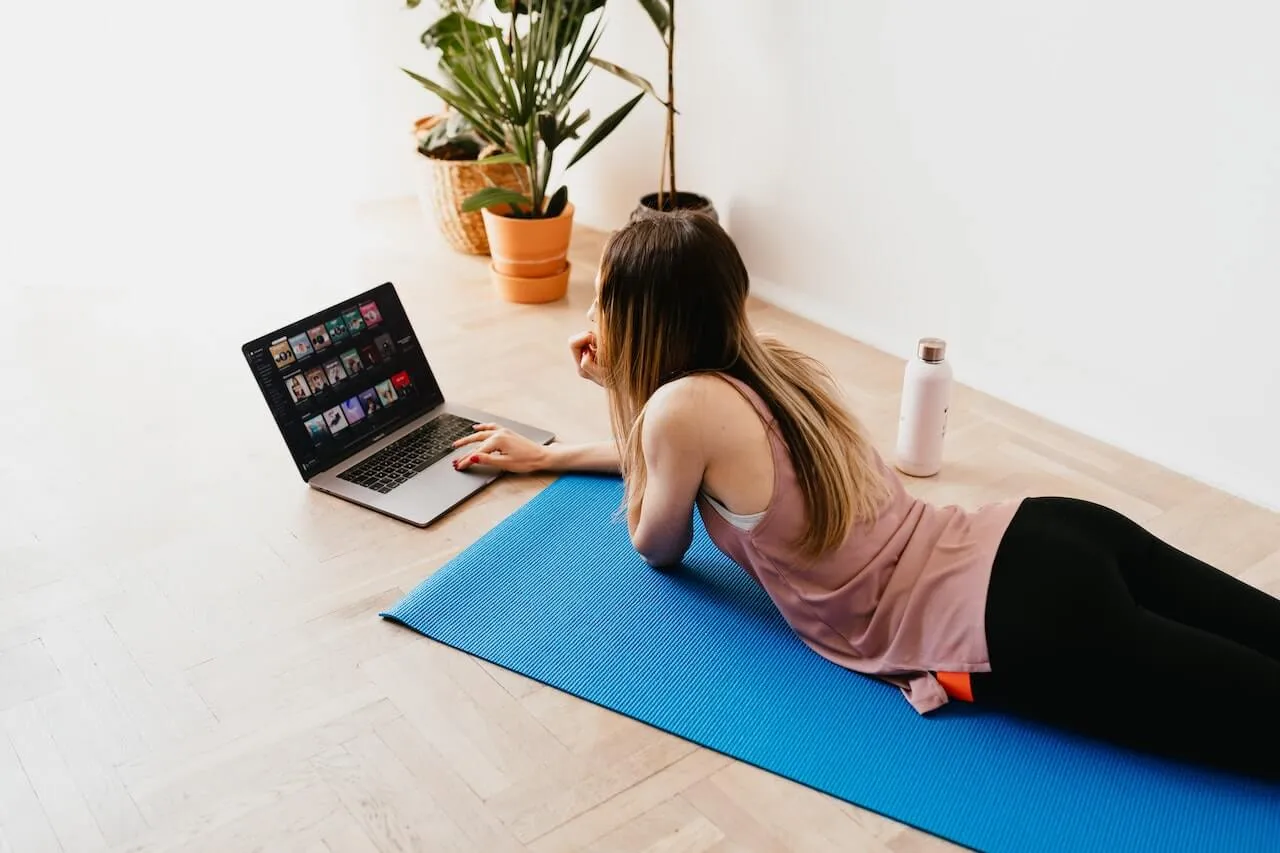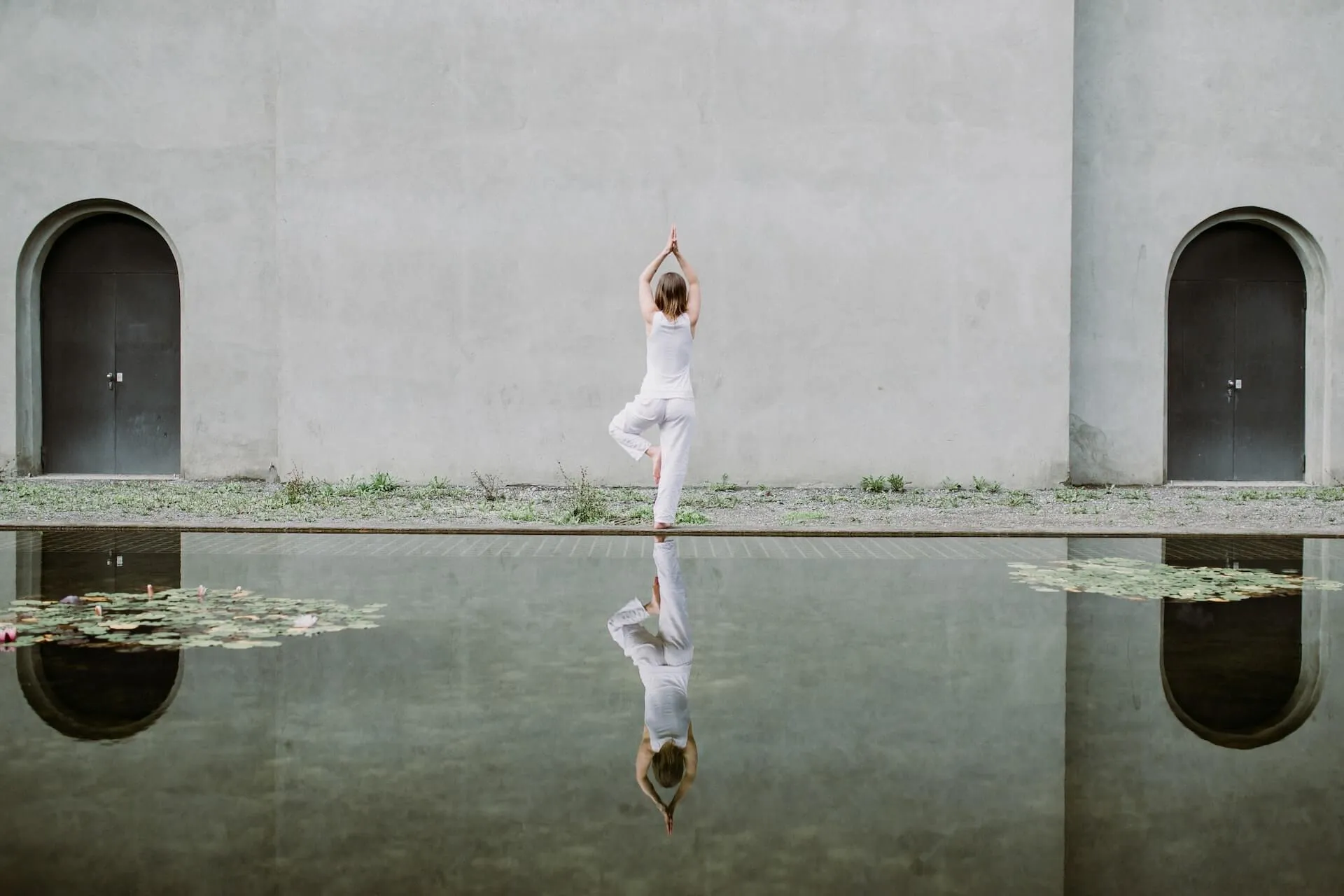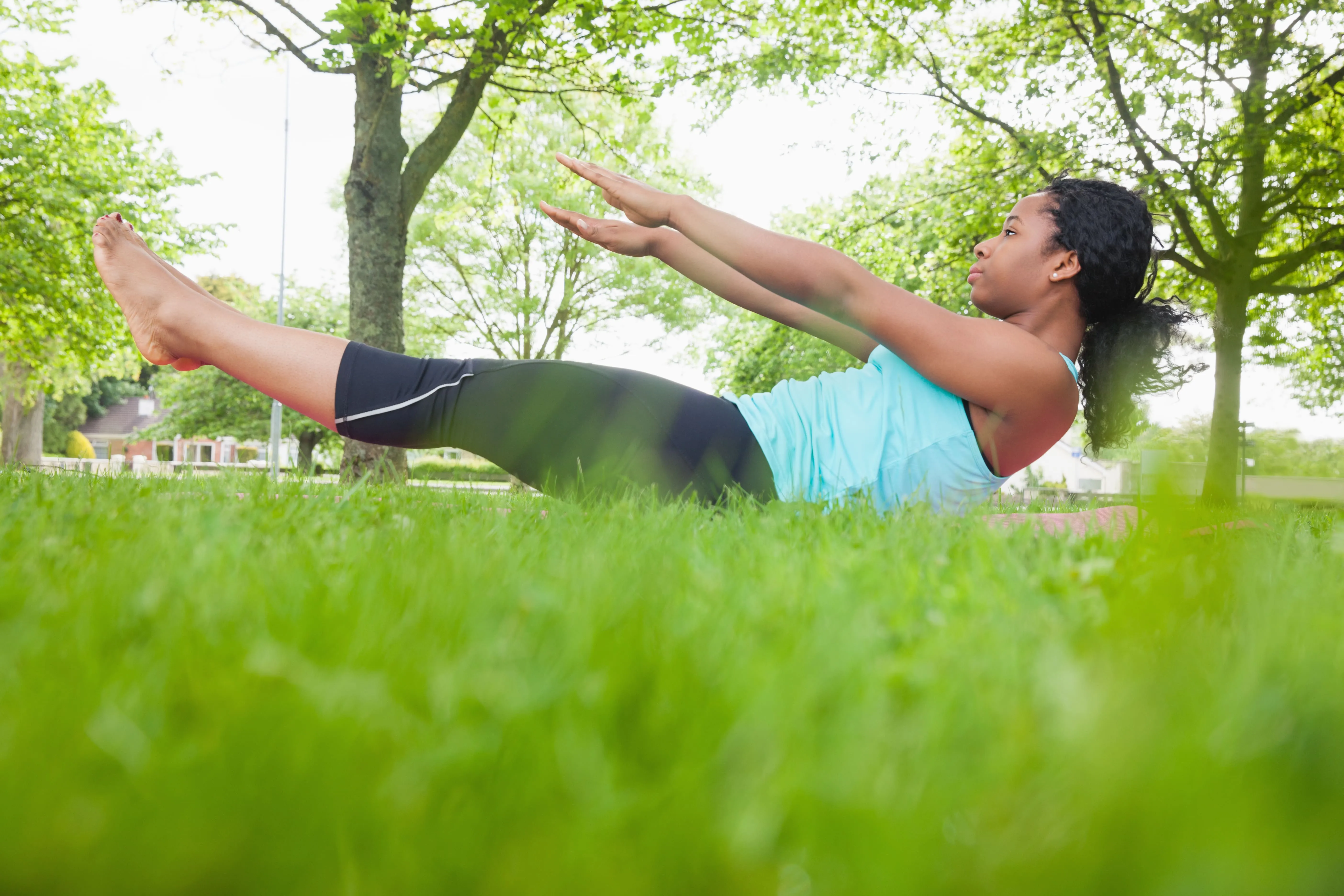Barre is a full-body, low-impact workout that has gained immense popularity over the years because it is effective, fun, and surprisingly challenging. Everyone from celebrities like Natalie Portman and Madonna to NFL players and Olympic bodybuilders uses barre to help with core strength, muscle endurance, stability, and power.1 Here are the benefits of barre workouts that might surprise you, as well as tips on starting your barre workouts at home or a studio today.
What is Barre?
Barre was created by a ballet dancer, Lotte Berk, in Germany who used her dance training to help recover from a back injury. Later, she moved to London to open her own barre studio, combining her love for ballet and knowledge of physical therapy to create a low-impact, full-body program for improving core stability, posture, and strength.2 Today, barre classes utilize aspects of classical ballet, yoga, and pilates to help improve flexibility, muscular strength, and cardiovascular endurance. But don’t worry; you don’t have to know anything about dancing or ballet to be successful in a barre class.
Traditional Barre vs. Cardio Barre
You can take many types of barre classes to get different workouts of various intensities and movements. Traditional barre involves small movements and sustained positions requiring you to push your muscles to their maximum endurance. Think of holding a lunge and pulsing up and down until your quads are shaking. Props (weights, balls, bands, etc.) add extra resistance and challenge to the movements. Cardio Barre is a specific type of barre class in which more full-body or dynamic movements are performed faster and intensity.3,4 One example is doing a squat with a shoulder press using dumbbells and moving through each repetition quickly. You may even be asked to flow through more dance-like movements like those done in Zumba. This differs from Traditional Barre due to the bigger, more dynamic movements. You will feel your heart rate increase and sweat pour in this type of barre class.
{{mid-cta}}
What to Expect From a Barre Workout
Most barre classes are structured to start with postural awareness and warm up at the actual “barre.”5 The instructor will start with arm exercises, either standing or on the mat, then move to core and glute exercises using various weights and props. After the burn, the class usually ends with yoga-type stretching and a cool down.
There are a few movements you should be familiar with before going to a barre class as these positions are a foundation for many other aspects of the workouts:6
- First Position: Standing tall with your heels together and toes pointed out as if making a small “V” with your feet.
- Second Position: Similar to the first position, except now your stance is wide, and your feet, knees, and hips are all facing outward. Your spine is neutral, and you are standing tall to keep your shoulders aligned with your hips.
- Tuck: Standing with feet together, pelvis tucked underneath you while engaging your glutes and pulling your abdominals in.
- Chair: This is performed at the barre and hands holding on for balance. Your feet, knees, and hips are together as you sit back into a low squat like you are sitting on a chair.
Barre Workouts vs. Pilates
You may notice many similarities between barre and popular workout classes like yoga or Pilates. Barre and Pilates are very similar in their focus in that the goal is to improve posture and core strength. However, barre separates itself from Pilates by doing more repetitions of various positions at a faster tempo to help “burn out” a muscle group and improve your overall muscle endurance and strength. Conversly, Pilates uses a very specific flow of movements as your muscles work hard to control the transitions through each movement. In barre classes, you will find yourself pulsing for 20, 30, or 50 repetitions of glute bridges in different positions to fatigue a specific muscle group. Both types of workouts are great for weight loss and blood sugar control.

Top Health Benefits of Barre Workouts
Here are the top 10 benefits of doing barre workouts as part of your health and fitness routine.5,6,7
1. Improves Posture: Barre focuses on strengthening the muscles of the shoulders, chest, core, and hips which are all very important for posture and typically the parts of our body that become weak with sitting and working all day long.
2. Increases Flexibility: Research shows that resistance training is just as effective for increasing flexibility than stretching alone. Barre classes incorporate strength and stretching to help you safely increase your mobility.
3. Increases Strength: The high repetitions for each muscle group help increase overall muscle strength, especially with the added resistance and weights during class.
4. Tones Muscles: The focus on postural alignment and sustained holds help increase our muscles' tone during barre classes. This is specifically true for our arms, glutes, and core.
5. Improves Endurance: Both muscular and cardiovascular endurance improves in barre classes because of the faster tempo and higher repetitions performed in class. You may think it looks easy, but you will break a sweat within the first 10 minutes of class!
6. Reduces Stress: Exercise helps reduce stress, but barre classes utilize meditative positions and higher-intensity movements to help you feel calm yet motivated when leaving a class.
7. Improves Mental Clarity: Because sustained and challenging poses require your brain to be constantly engaged, barre classes can help improve mental clarity and focus.
8. Improves Balance: Balance is a coordianation of stimuli from vision, muscles, and the inner ear. Barre classes help strengthen these different components that are critical for balance.
9. Low Impact: Barre includes low-impact movements and exercises such as squats, bridges, and lunges that make it an easy and safe workout for anyone to try.
10. Low Injury Risk: Most low-impact exercise reduces injuries, as these tend to be safer movements. Barre is great for reducing injury risk because it strengthens the core and hip muscles, which results in better balance, stability, and joint protection.
Is Barre Good for Weight Loss?
Barre is a great way to target weight loss because of the combination of strength training and cardio-based workouts needed to burn calories and increase lean muscle mass. You will work every single muscle in your body, which helps increase overall metabolism, create better body composition, and help you reach weight loss goals. That said, it is important to remember that any exercise program for weight loss should be paired with a healthy diet.
How Long Before You Start Seeing Results?
The time it takes to see results from barre workouts truly depends on your goals and what “results” you are trying to see. Muscle strength takes about three to four weeks of consistent stimulus before you notice you can lift heavier weights. Cardiovascular endurance also takes about three to four weeks of consistency before noticing you are less tired or your heart rate isn’t as elevated for a particular class. Blood sugar levels, even in those who are living with diabetes, will experience immediate effects just one to three days post-exercise;8 however, this is dependent on your diet and other lifestyle habits. If your ultimate goal is weight loss, give yourself at least seven to eight weeks of being consistent with barre classes before seeing big changes. This means committing to three to four days of barre classes a week, along with eating whole foods and managing your blood sugar. As with any weight loss program, it is important to understand how much exercise is right for you.
DIY: Barre Classes at Home
Start and continue your barre workouts at home utilizing minimal equipment and your television. There are many studios and certified teachers who offer classes online. You only need a mat, ballet bar (or a chair), resistance bands, and small weights. You may already have a lot of these things at home! Use a blanket in place of a mat, and heavy soup cans in place of weights. Even just using your body can provide for a great strength-focused workout.

Tips to Set You Up for Success in Barre
Here are some tips to help you get started and feel successful in barre classes:
- Start with a beginner’s class: a few base poses (first and second position) are important to know as you become more advanced.
- Wear comfortable clothing such as yoga pants, a t-shirt or tank top, and socks with extra grip.
- Make sure to have the right equipment
- Yoga mat
- Yoga block
- Grippy socks
- Sliders
- Resistance bands
- Weights
- Rubber ball the size of a soccer ball
- Pace yourself and listen to your body. Take breaks when you need them, and drop the weights if you are feeling tired. You can also slow the movements down if you feel the tempo is going too fast for you.
Using a CGM with Signos: Real-Time Data, Backed by AI
Signos pairs a real-time glucose biosensor with AI trained on tens of millions of data points to deliver personalized, science-backed guidance. See exactly how your body responds, and take action.
Learn how it works. Ready to get started? Join now.
Topics discussed in this article:
References
- https://www.webarre.com/pro-athletes-do-barre-too/
- https://physique57.com/blog/barre-yoga-pilates-right/#:~:text=Barre%20helps%20strengthen%20and%20tone,help%20prevent%20conditions%20like%20osteoporosis
- https://www.nourishmovelove.com/45-minute-cardio-barre/#:~:text=What%20is%20Cardio%20Barre%20Workout,the%20legs%2C%20thighs%20and%20glutes.
- https://www.byrdie.com/barre-benefits
- https://www.healthline.com/health/benefits-of-barre#about-barre
- https://www.today.com/health/diet-fitness/what-is-barre-rcna30265
- Holmes, Alexandra. (2021-08). Combining Fitness and Physical Therapy as a Treatments for Post-partum Pelvic Floor Dysfunction - Urinary Incontinence – a Case Study. Theses and Dissertations Collection, Digital Initiatives, University of Idaho Library. https://www.lib.uidaho.edu/digital/etd/items/holmes_idaho_0089n_12165.html
- Adams O. P. (2013). The impact of brief high-intensity exercise on blood glucose levels. Diabetes, metabolic syndrome, and obesity: targets and therapy, 6, 113–122. https://doi.org/10.2147/DMSO.S29222




.svg)



.jpeg)






.svg)
.svg)
.svg)
.svg)
.svg)
.svg)
.svg)
